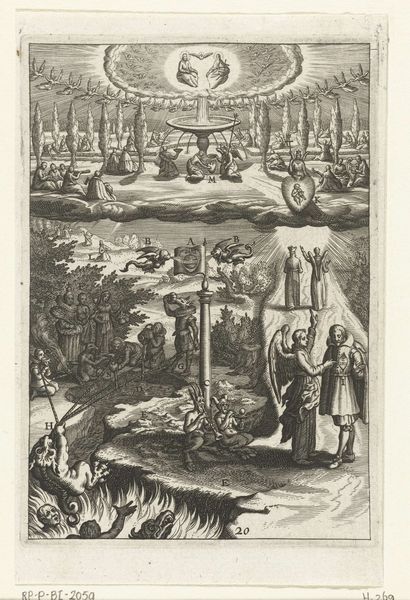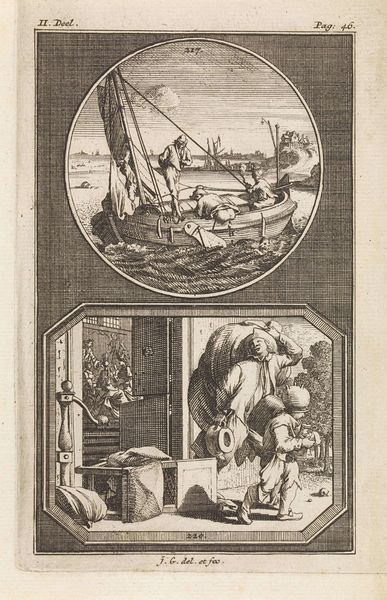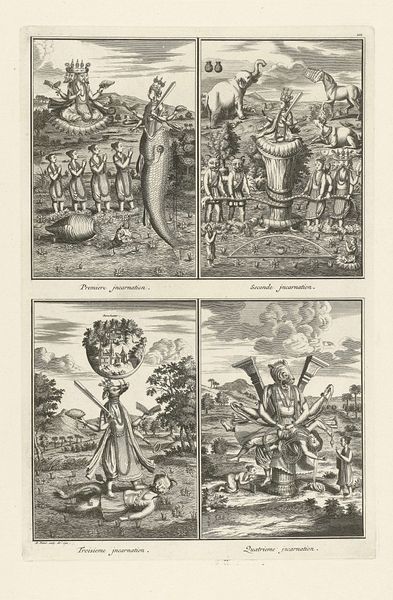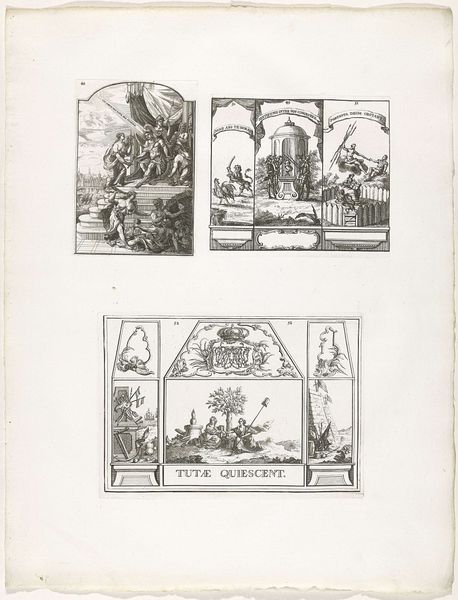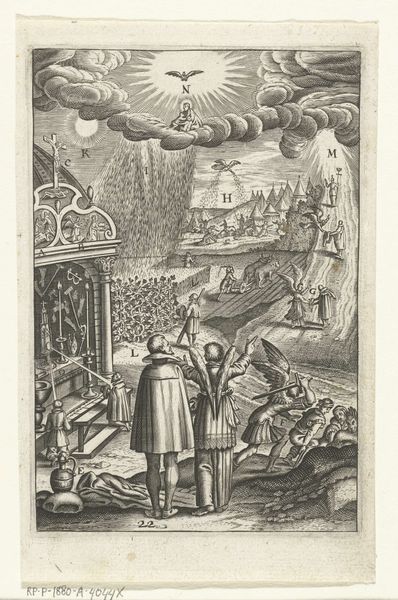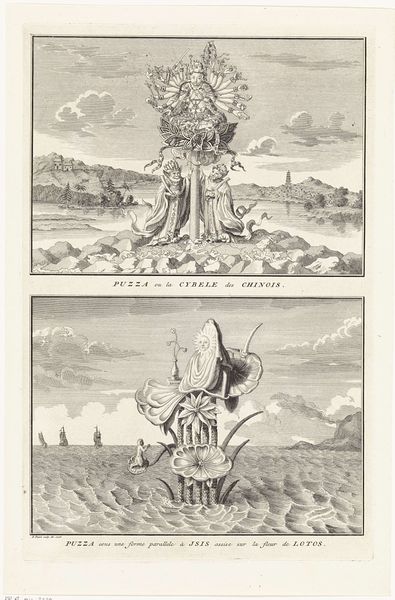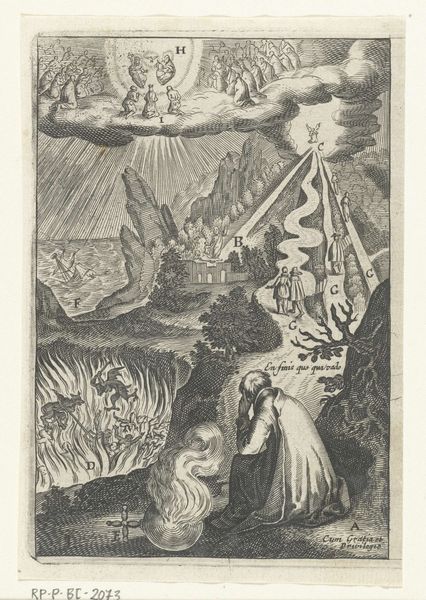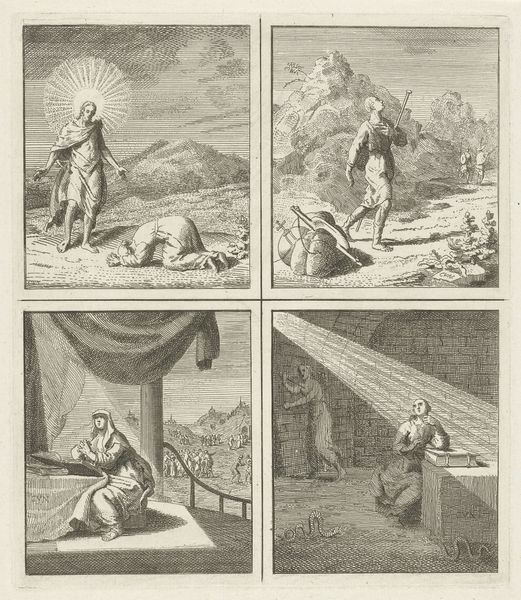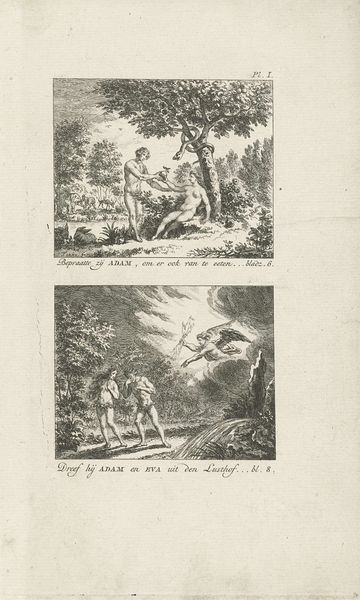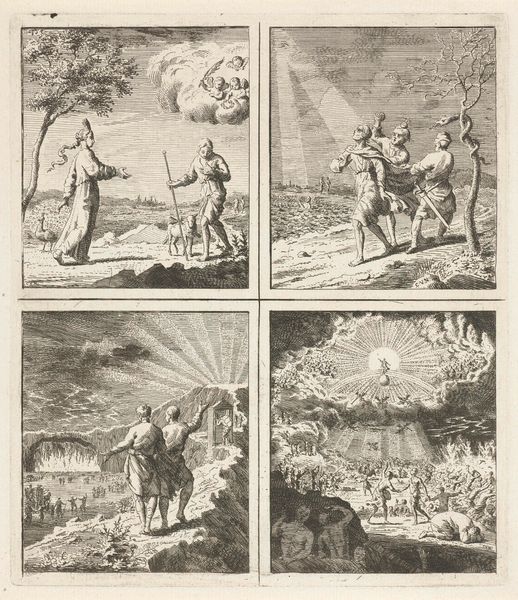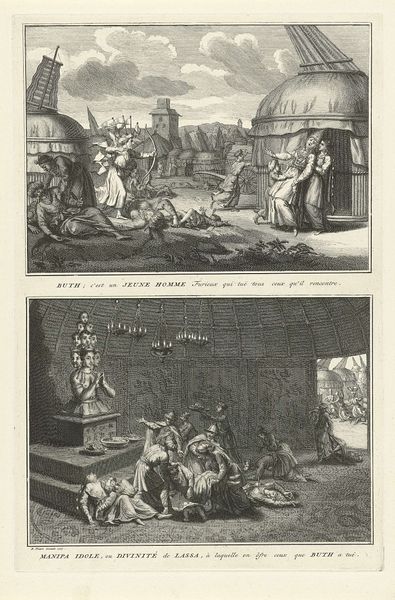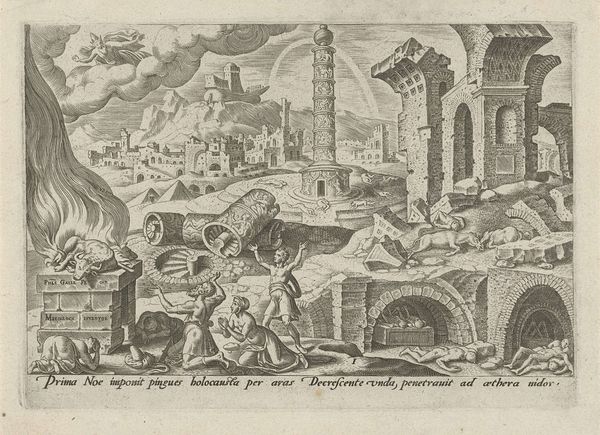
Voorstellingen van de incarnaties van de Indiase god Vishnu en verering van Ixora 1722
0:00
0:00
print, engraving
#
baroque
# print
#
asian-art
#
old engraving style
#
figuration
#
line
#
history-painting
#
engraving
Dimensions: height 332 mm, width 221 mm
Copyright: Rijks Museum: Open Domain
Editor: This engraving from 1722, by Bernard Picart, is called "Voorstellingen van de incarnaties van de Indiase god Vishnu en verering van Ixora," which translates to "Representations of the incarnations of the Indian god Vishnu and worship of Ixora." The print has this fantastic old engraving style to it and includes many human figures. How do you interpret the symbolic imagery in this work? Curator: I’m drawn to the ways this engraving blends Eastern religious concepts with a Western artistic style. Look at the composition, how the artist renders Vishnu's incarnations, not as simple illustrations but imbued with a certain... theatricality that aligns with Baroque aesthetics. Editor: Theatricality? I see it too. Like the figures are posing on a stage! Curator: Precisely! Now consider the 'Ixora' scene. Notice the column of light. What emotional weight might that carry for viewers of that era, steeped in both religious and philosophical ideas about enlightenment? Editor: It gives me a sense of otherworldly power, and in relation to enlightenment, the figure is illuminating something for the devotees. Curator: Exactly, consider the artist was trying to interpret and present a foreign belief system to a European audience, it speaks volumes about how cultures encounter and translate one another. Is the translation an objective reflection, or an alteration? Editor: So it’s not just about documenting; it's about interpretation, perhaps even transformation, of symbols. The European lens shapes how the Eastern concepts are conveyed, therefore transforming what the figures embody in terms of visual understanding for viewers of the work at the time it was produced. Curator: Absolutely, the layering of cultural lenses changes and reflects symbolic meanings. What do you make of the continued relevance of iconography like this today? Editor: It shows that symbols are continuously reinterpreted. Different cultures will visually interpret concepts uniquely and these interpretations build and shift the symbolism across time. Thank you for unpacking that. I never would have caught that!
Comments
No comments
Be the first to comment and join the conversation on the ultimate creative platform.
